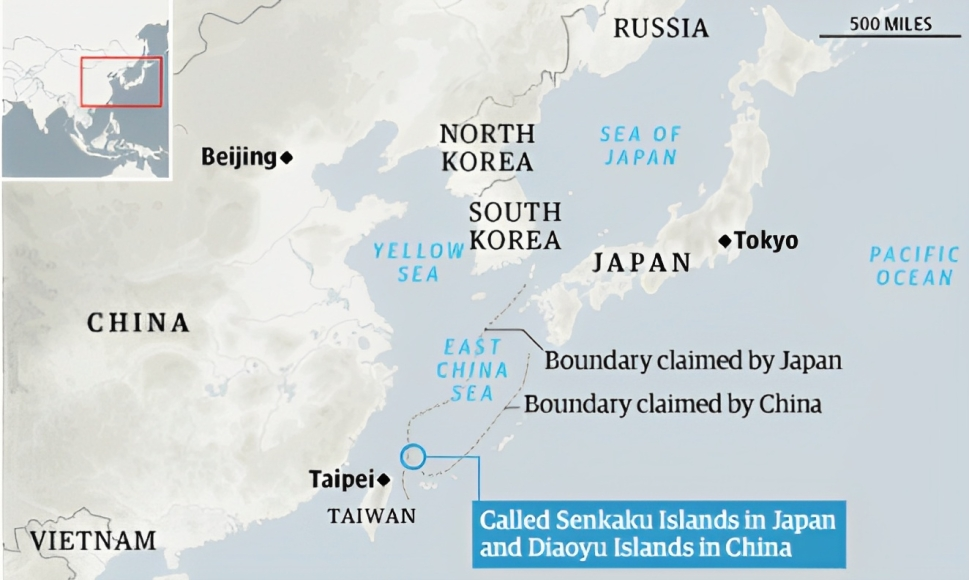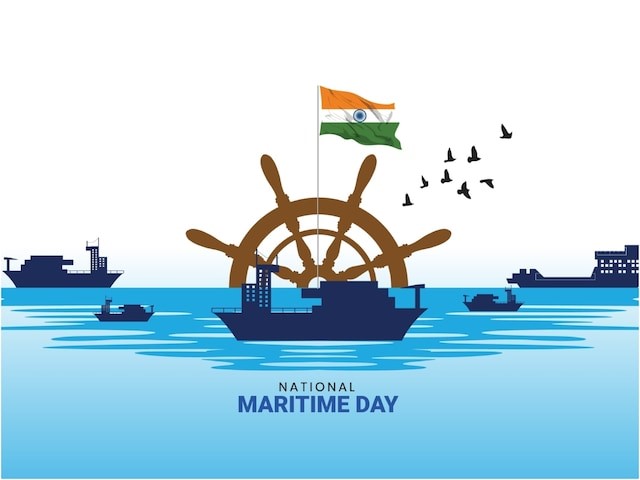Description

Copyright infringement not intended
Context: The Senkaku Islands, also known as Diaoyu Islands in China, are a group of uninhabited islands in the East China Sea that are controlled by Japan but claimed by China. The isl
ands have been a source of tension between the two countries for decades, especially since China began to send its coast guard vessels to patrol the waters around them.
Details
China Coast Guard
- China Coast Guard (CCG) vessels started to navigate in Japan's territorial waters around the Senkaku Islands, according to Japan Coast Guard (JCG) sources.
- The CCG vessels also activated their automatic identification system (AIS) equipment, which broadcasts their position, course, speed and other information to nearby ships and shore stations.
Japan Coast Guard (JCG)
- The JCG sources said that this was a move by China to assert its administrative right over the islands and to challenge Japan's sovereignty.
- The JCG patrol vessels, which do not use AIS equipment around the Senkaku Islands to keep their operations secret, asked the CCG vessels to leave the area but were ignored.
- The China Coast Guard (CCG) vessels stayed in Japan's territorial waters for several days, sometimes following Japanese fishing boats or changing direction erratically.
- The JCG sources said that this was a provocation and a violation of international law.
Senkaku Islands
- The Senkaku Islands are a group of small, uninhabited islands in the East China Sea that have been the subject of a long-standing territorial dispute between Japan, China and Taiwan.
- The islands are strategically located near important shipping lanes and rich fishing grounds, and may also have oil and gas reserves under the seabed.
- The sovereignty over the islands has implications for the security and economic interests of the claimants, as well as for regional stability and order in East Asia.
Japan claims
- Japan claims that it discovered and incorporated the islands as part of its territory in 1895, after conducting surveys that confirmed that they were not under the control of any other state.
- Japan argues that it exercised effective administration over the islands until 1945 when it surrendered them to the United States along with Okinawa and other Ryukyu Islands at the end of World War II.
- Japan regained sovereignty over Okinawa and the Senkaku Islands in 1972, under the Okinawa Reversion Agreement with the United States, which also stipulated that the United States would continue to provide security guarantees for Japan under their mutual defense treaty.
China and Taiwan Claims
- China and Taiwan contend that they have historical and legal rights to the islands, which they call Diaoyu and Tiaoyutai respectively.
- They assert that the islands were part of China's territory since at least the 14th century and that Japan illegally seized them during its expansionist aggression in the late 19th and early 20th centuries.
- They claim that Japan should have returned the islands to China after World War II, under the Cairo Declaration and the Potsdam Declaration, which called for Japan to relinquish all territories it had taken from China by force.
- They also reject the validity of the Okinawa Reversion Agreement, which they say was concluded without their participation or consent.

Concern
- The dispute over the Senkaku Islands poses significant challenges to peace and cooperation in the East China Sea.
- The islands are not only a source of nationalist sentiments and historical grievances among the parties involved but also a potential flashpoint for military confrontation and conflict.
- The increasing frequency and intensity of maritime and aerial encounters around the islands raise the risk of accidents and miscalculations that could spiral out of control.
- The dispute also complicates the efforts to manage other regional issues, such as trade, energy, environment, and non-proliferation.
Way Forward
- The resolution of the dispute over the Senkaku Islands requires dialogue and compromise among the claimants, as well as respect for international law and norms.
- The parties should seek to establish mechanisms for communication and crisis management, as well as explore avenues for joint development and cooperation in the area.
- The parties should also refrain from unilateral actions that could change the status quo or escalate tensions.
- The international community, especially the United States, should play a constructive role in facilitating dialogue and confidence-building measures among the parties, as well as in maintaining peace and stability in the region.
|
PRACTICE QUESTION
Q. Disputes over “Senkaku Islands” seen in the news. The islands are located in;
A) The South China Sea
B) The Philippines feet
C) The Sea of Japan
D) The East China Sea
Answer: D
Explanation: The Senkaku Islands are a group of small, uninhabited islands in the East China Sea that have been the subject of a long-standing territorial dispute between Japan, China and Taiwan.
|
https://theprint.in/world/china-coast-guard-vessels-navigate-in-japans-territorial-waters-around-senkaku-islands/1600358/
















